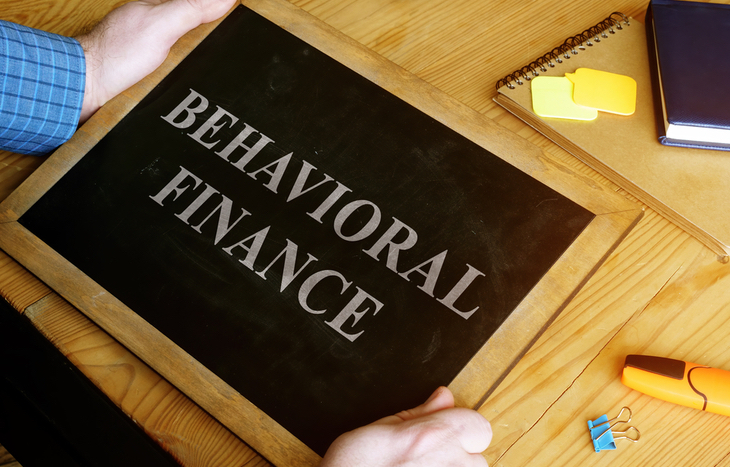What is Behavioral Finance?
There’s an old saying among investors that “the market can stay irrational longer than you can stay liquid.” It’s a tongue-in-cheek nod to behavioral finance: the concept of applying rational thinking to seemingly irrational market events. When you expect the price of a stock to fall significantly and instead, it rises, behavioral finance can yield answers that quantitative analysis might not have.
Behavioral finance examines several psychological concepts and applies them to how investors behave in public markets. Understanding these concepts can help provide context for market activity that defies conventional logic.
Here’s a surface look at behavioral finance and its role in understanding financial markets when the facts and figures of the markets themselves aren’t making sense.

First, an Example of Behavioral Finance at Work
To best-understand behavioral finance in practice, it’s a good idea to start with an example.
Marybeth analyzes ABC Startup from both financial and technical standpoints. The stock currently trades for $30, but its financials are a mess. It has debts coming soon, erratic cash flow, poor management and few prospects for improvement. She believes that, after an upcoming earnings call, the price will plummet to $25 per share, so she opens a short position.
On the earnings call, the company reports a bevy of bad news. This includes everything Marybeth had already researched. However, after the call, the share price rises from $30 to $32. What happened?
Despite fundamental signs that the business was overvalued, Marybeth overlooked the fact that ABC Startup is a tech startup. And, in the current market, big companies are gobbling up small tech startups at hugely inflated prices. Despite its struggles, it’s clear that investors believe it’ll get acquired on the basis of its IP alone. Thus, investor sentiment remains bullish and the price remains high.
The Pillars of Behavioral Finance
The above example is just one common example of behavioral finance at work. In fact, it’s an example of herd mentality: one of the five core behavioral drivers that cause irrational decision-making. Here’s a look at all of them:
- Herd mentality. People anticipate events before they happen and act prematurely, causing others to feel like they’re missing out and thus, act the same way.
- Emotional gapping. The interference of emotion in decision-making, causing a shift away from facts, toward feelings. The result is an irrational action.
- Anchoring. Locking in to a certain belief and using it as a foundation for broad decision-making. However, the anchor might not be broadly applicable, or even correct.
- Mental accounting. Mental allocation of money that skews actual accounting, creating inaccuracies and gaps in spending or saving.
- Self-attribution. Using special knowledge to inform decisions that might not be entirely accurate based on public perception. There’s such a thing as too much knowledge!
These five pillars of behavioral finance form the foundation for a wide range of cognitive biases. In fact, Charlie Munger, the famed investor and business partner of the great Warren Buffett, published a popular essay on 25 cognitive biases, The Psychology of Human Misjudgment. These examples all illustrate the power of irrational thinking and its effects within rational financial markets.
How to Use Behavioral Finance
There are three distinct ways to employ behavioral finance to individual investing, to become a more informed investor.
- To understand “why.” When markets don’t behave as you expect them to based on fundamental and technical assessments, behavioral analysis can lend insight into the reasons behind seemingly irrational behavior.
- To prevent mistakes. Being aware of behavioral tendencies and cognitive biases can help re-center investors, so they don’t fall into the trap of misinformed decision-making and the consequences that come with it.
- To identify opportunities. Understanding the behavioral pitfalls people are prone to helps mindful investors identify irrational markets and make rational, informed decisions that capitalize on them.
Keep in mind that understanding behavioral finance doesn’t stop irrational decision-making. You can only control your own decisions! Often, in irrational markets, rational investors need to take a defensive stance. Hence the old saying, “the market can stay irrational longer than you can stay liquid.”
Real-World Examples of Behavioral Finance
Irrational behavior can occur at both micro and macro levels within public markets. That is to say, it can affect individual stocks or the market as a whole.
At the stock level, GameStop (NYSE: GME). In January 2021, the stock jumped 1,625% over the span of just 30 days, fueled by herd mentality and emotional gapping. The company’s financials signaled impending bankruptcy, which led many institutional investors to short it. In response, retail investors sent the price skyrocketing in a short squeeze. The massive price spike had little to do with the company’s value and more to do with the war between bears and bulls.
At the market level, nothing illustrates behavioral finance in action like the Dot-com Bubble of the late 1990s. Investors abandoned all pretense of fundamental analysis during this period, buying up any internet startup for fear of missing the “next big thing.” In reality, most of these companies were worthless or unperforming. In the early 2000s, the bubble burst and many investors suffered heavy losses on reckless speculation.
Rational Markets Will Always Face Irrational Behavior
It’s impossible to separate investors from their emotions. Even the most well-intentioned investors fall into cognitive biases and behavioral traps as they seek to beat the market (and other investors). Irrational events can leave rational investors holding the bag and scratching their heads.
To understand why markets behave outside the bounds of logic and reason at times, every investor needs to become a student of behavioral finance. People are unpredictable, which means market activity is unpredictable. Understanding why can help logical investors protect themselves, and even capitalize when illogical decision-making shapes a reactionary market.





